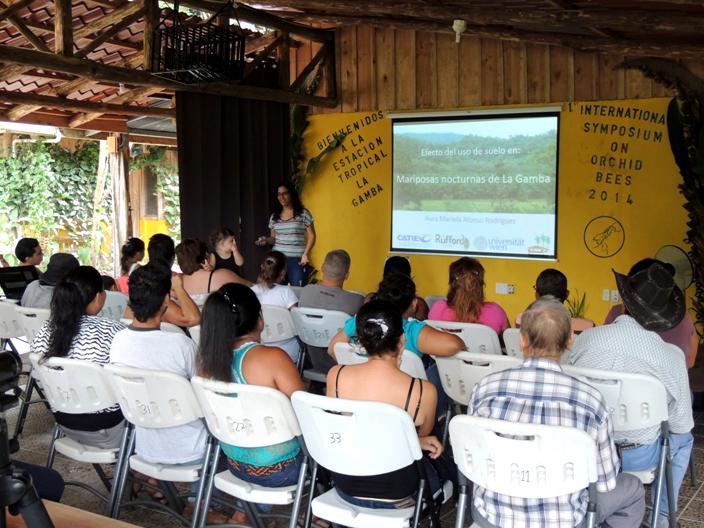Aura Mariela Alonso Rodríguez
This project aims to characterize moth assemblages in various rural land-use types and identify responses to habitat disturbance, to identify bioindicators as a monitoring tool.
Land-use intensification and habitat fragmentation are currently the major threats to tropical forests, but their precise effects are unknown for many groups of species, especially for moths, which have been somewhat neglected even though they compose the majority of Lepidoptera. In general, it is known that forest destruction reduces biodiversity, for which it seems important to determine how much biodiversity (and in what groups) can be maintained at different levels of habitat degradation and fragmentation. This research study will contribute to the knowledge of land-use change dynamics and how it affects biodiversity, using moth assemblages as a focal group to assess ecosystem quality in the vicinity of La Gamba Tropical Station, on the Golfo Dulce Region of Costa Rica.

Public outreach activity in La Gamba Tropical Station.
Moths will be sampled in four habitat types (old-growth forest interior, old-growth forest edge, young secondary forest, and even-aged oil palm plantations) with automatic funnel light traps, using an 8-W UV weak fluorescent light tube to minimize attraction from surrounding landscape matrix. Sampling will be conducted once a month (Feb-July 2013) in low moonlight nights; Collected specimens of the families Erebidae-Arctiinae and Geometridae will be mounted, sorted to morphospecies level and taxonomically identified as far as possible. Voucher specimens will be deposited at the National Biodiversity Institute (INBio) of Costa Rica. In addition, data from previous studies on bird and bat assemblages throughout the same sites will be obtained, to determine the relationship between the abundance and diversity of the three groups.
A few habitat variables will be measured to better describe moth diversity and composition throughout the landscape (canopy cover, floral composition and diversity, temperature and humidity). Statistical analyses will be conducted to determine differences between land-use types and identify potential bioindicator species. A guide of moth bioindicators for the Golfo Dulce Region will be designed for ecological monitoring by local farmers, community members and professionals. Workshops will be offered in the community to share the findings of the study and demonstrate how to properly use the guide.
The overall results of this study will serve monitor environmental quality of areas that serve as a buffer to the Piedras Blancas National Park and maintain connectivity within the Osa Biological Corridor, by the proposal of guidelines for improved landscape management that may aid in conserving local biodiversity and promoting rural community tourism.